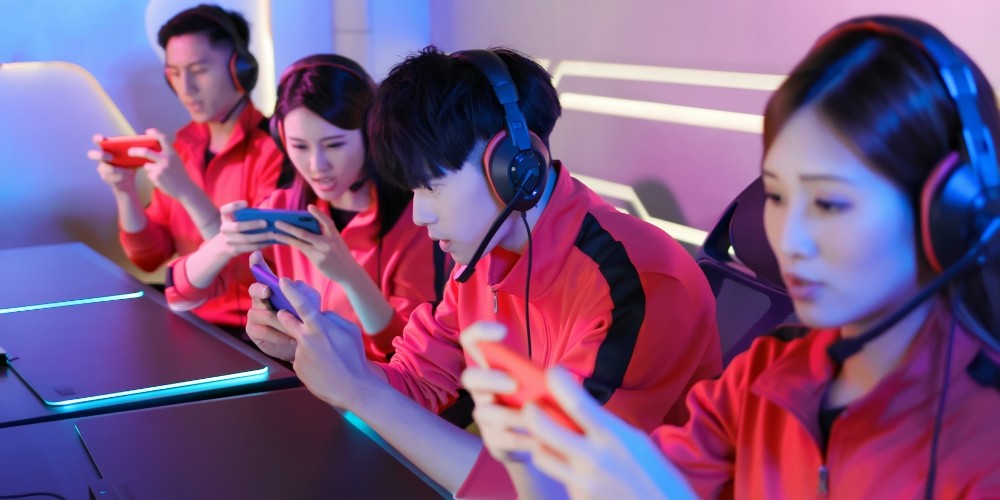The Expansive Influence of Social Elements in Mobile Gaming
Jan-12-2024

In the sprawling universe of mobile gaming, integrating social features has become more than just a trend; it is a transformative force that shapes how games are played, experienced, and valued by millions around the globe. This evolution has altered the game design landscape and reshaped how players interact with each other and the game itself. The impact of social features in mobile games is profound, affecting everything from user engagement and retention to community building and the very culture of gaming. As we delve deeper into this phenomenon, we uncover the multifaceted ways in which social elements have become a cornerstone of the mobile gaming experience.
Enhanced User Engagement
At the core of integrating social features into mobile games is boosting user engagement. By allowing players to connect with friends, compete against each other, and share their achievements on social media, games become more than just a solitary activity; they transform into a shared experience. This social interaction enriches the gaming experience and significantly increases the time users spend in-game. Features such as leaderboards, multiplayer modes, and collaborative challenges encourage players to engage more deeply and frequently with the game, thereby driving up both session lengths and retention rates.
Community Building and Loyalty

Another significant impact of social features is fostering communities around mobile games. Online forums, social media groups, and in-game chat functionalities allow players to discuss strategies, share content, and form friendships. This sense of community not only enhances the game's enjoyment but also fosters a strong loyalty among its players. Games that successfully create an engaged and active community often see increased longevity and sustained interest over time, as players are motivated to remain part of the gaming community they have grown to value.
Influence on Game Design and Development
The popularity of social features has also influenced game design and development strategies. Game developers are increasingly incorporating social elements right from the conceptualization phase, considering how to facilitate interactions between players and enhance the social experience within the game. This has led to innovative game mechanics and features prioritizing collaboration, competition, and community engagement. The focus on social connectivity has also spurred the development of cross-platform games, allowing players to interact regardless of their device, further expanding the social reach of mobile gaming.
Monetization Opportunities

Social features do not just enhance player experience; they also open up new avenues for monetization. Games incorporating social elements often see higher engagement levels, increasing opportunities for in-app purchases and advertising. Social competition and collaboration can incentivize players to invest in in-game purchases to gain an edge over their peers or contribute more effectively to their team. Additionally, integrating social media allows for more personalized and targeted advertising, increasing the effectiveness of marketing efforts and the potential for revenue generation.
Challenges and Considerations
Despite the numerous benefits, integrating social features into mobile games is not challenging. Privacy, cyberbullying, and online safety concerns have prompted developers to implement robust security measures and moderation tools. Ensuring a positive and safe environment for all players is paramount to maintaining the integrity and popularity of the social gaming experience. Furthermore, developers must navigate the delicate balance between encouraging social interaction and avoiding intrusive or mandatory socialization, which can deter players who prefer a more solitary gaming experience.
The Cultural Impact of Social Gaming

Beyond individual games, the rise of social features in mobile gaming has contributed to a broader cultural shift. Gaming is no longer seen as an isolating hobby but as a vibrant social activity that can bring people together, irrespective of geographic boundaries. The communal aspects of mobile games have facilitated the formation of a global gaming culture, where players from different parts of the world connect, share, and collaborate. This global community enriches the gaming experience and fosters cross-cultural understanding and friendships, highlighting the unifying power of play.
Conclusion
Integrating social features into mobile games has unequivocally transformed how we play, interact, and experience games. Social elements have proven to be a game-changer in the mobile gaming industry by fostering community, enhancing user engagement, and influencing game design. As technology advances and social behaviors evolve, the role of social features in mobile games will undoubtedly continue to grow, paving the way for even more immersive and connected gaming experiences. The future of mobile gaming is social, and its impact extends far beyond the games themselves, influencing our culture, connections, and the way we view gaming as part of our social fabric.







